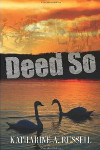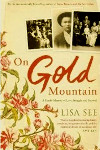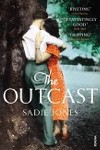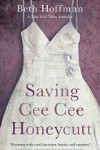Katharine A Russell – Deed So
Posted 11th March 2011
Category: Reviews Genres: 2010s, Domestic, Historical, Social
2 Comments

Over the tip of the iceberg but not yet on the ground of the other side…
Publisher: (self-published)
Pages: 428
Type: Fiction
Age: Young Adult
ISBN: 978-1-4537-7503-5
First Published: 2010
Date Reviewed: 8th March 2011
Rating: 3.5/5
In Haddie’s town in Maryland, America, it’s the 1960’s and African Americans are now able to live lives more equal to their European neighbours. But there is still segregation and there are low opinions of the people still called “Negroes”. It is this conflict between equality and low opinion that leads the death of an African American boy to create a furore. The town may be able to get over it but this issue isn’t their “only” problem.
I have to admit that I was skeptical when I received Deed So because discovering it was self-published and then reading the blurb that heralded it as “astonishing” and “gorgeously written” didn’t bode well in my mind. For a while I did indeed have reason to keep comparing the content to what the blurb declared true.
Unfortunately there are a mass of typing errors in the book, including a few which change the meaning of what’s written and thus have to be pondered over. The majority of the book walks along seeming to not go anywhere – although there are subplots they are wrapped up quickly enough and one can wonder where the book is truly heading. The climax is too convenient, the story gets to a point where it’s racing along like nobody’s business and the event is a good length, and then suddenly it ends in a very unsatisfactory manner.
But there is a lot of good in this book that, by the time you do reach the end, has balanced out the bad. One of these good things is that Deed So is very much one of those works where the reader can live the life through the words. Because the plot takes a long while to show it’s true colours you are able to sit back and really explore life in the 1960’s, which if you’re at all interested in historical domestic situations and were not around at the time, is a real treat. Russell does a good job with the descriptions, speaking personally I began the book not really knowing what made the 1960’s what they were – in other words my knowledge of the distinctions between culture, dress, and technology between the 1930’s and 1960’s is a little blurry – but by the end I could say that I was far more knowledgeable and able to conjure up images, albeit if they weren’t completely perfect.
If the strongest overall aspect is the invitation to the reader to immerse themselves, then so close in prominence that it could be argued just as strong, is the social aspect. On the face of it the major issue covered is directly related to the acceptance of African Americans but in fact the issue is broader than this, encompassing social relations as a whole. Whether due to fact or Russell’s creation (this I do not know) the situation provides a good introduction for further contemplation. The town sits in the middle of the two sides of debate – they have accepted blacks into their community, and talk to them as equals, but there is still some segregation upheld, and the past inequality continues to affect the choices of the community in the way that the whites are higher in society. Because Russell gives the reader this quasi-balance and you get to hear each side of the story every time, you come away much more knowledgeable than you would have if only either segregation or complete equality had been spoken of.
In referring to a broader social issue I look to the problems with class and how the family and community at home related to the return of soldiers. One of the subplots involves the complete change a boy undergoes after having been in Vietnam and how he is unable to speak out about it because of the suffocation of an uninformed community and a society unwilling to discuss the issues he has had to face. In addition to this there are also several domestic troubles.
Russell has created a cast of characters bound by family. All her characters belong to families and each family is important in the community and known by all. Yet, whether they acknowledge it or not, every single one of those families have problems of varying natures.
It would be impossible to point to a particular motive Russell may have had to write this book. Like many other writers, no matter whether they use the period to comment on a social or long-term domestic issues, Russell has created a story with her own spin that is thus at once similar yet vastly different. Each story of this nature brings different thoughts to the foreground.
As a reader I feel privileged to be able to have so many viewpoints and opinions in mind on which, if I so chose to do so, would make for a well-debated essay.
Deed So has it’s fair share of technical hitches and could have done with more polish, but it’s safe to say that it’s a pretty decent novel and informer.
I received this book for review from the author thanks to Pump Up Your Book.
Related Books
March 11, 2011, 7:06 pm
It’s too bad about the mistakes! I guess it’s a good reminder that editors exist for a reason.
Charlie: Yes, I think no matter how many times you can edit your own work, someone else is always going to find problems that you don’t notice.
2 Comments
Comments closed



























March 11, 2011, 5:20 pm
Thanks! for sharing this.